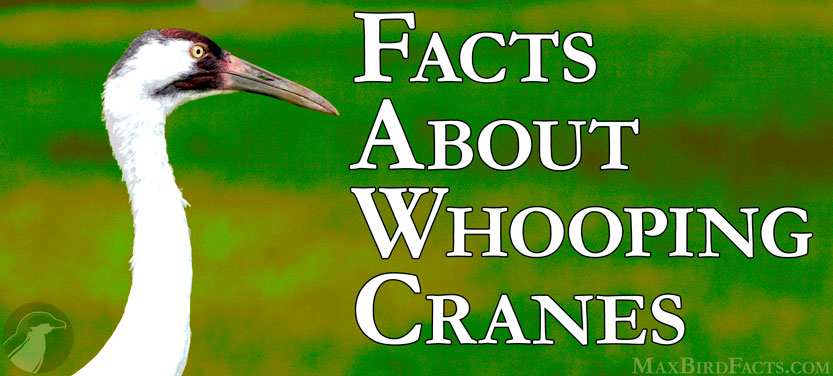Whooping Cranes (Grus americana) are brilliant birds. Whooping Cranes are among the few species that survived the lamentable slaughter of North American wildlife in the late 19th and early 20th centuries.
Thankfully these cranes have been saved from the brink of extinction and are on the road to recovery. Massive efforts from private organizations and government bodies were crucial to protecting these uniquely North American cranes.
So, without further adieu, let’s discuss some fascinating facts about Whooping Cranes coming!
1. Whooping Cranes are the tallest bird in North America.
A Whooping Crane can stand up to five feet tall and has a wingspan of over seven feet. These are the loftiest birds in the New World, only rivaled by the flightless Greater Rea of eastern South America.
This incredible height allows the cranes to comfortably survey their surroundings for predators or a meal. Their astonishing size also can make them easy to spot for other cranes looking to join their flock.

2. There were only 21 Whooping Cranes left in 1941.
Like many other species during the late 1800s and early 1900s, the Whooping Crane was nearly hunted to extinction.
Thankfully, the National Audubon Society and US Biological Survey teamed up to create the Cooperative Whooping Crane Project to protect and study the Whooping Crane’s ecology.
Groups dedicated to collecting wild crane eggs to be hatched and reared in safety helped start the Whooping Crane on a path of recovery.
3. Humans retrained the Whooping Crane migration route.
This might be my favorite fact about Whooping Cranes!
In 1999, Operation Migration USA took off with the goal of rebuilding a population of wild, migratory Whooping Cranes. These conservationists reared young Whooping Cranes in full white outfits and fed the birds using a hand puppet modeled after an adult Whooping Crane’s head.
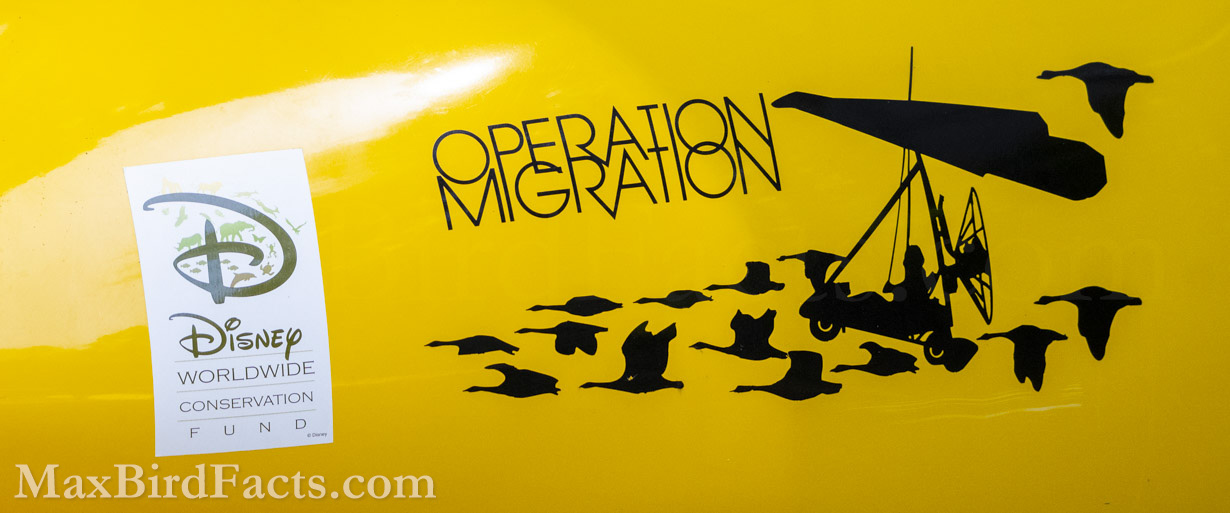
After two years, the scientists led the first guided flight in their ultralights along the crane’s historic migratory path. This 1,200-mile flight began at their rookery in Wisconsin and ended in Florida. By the end of 2001, the wild population of Whooping Cranes had rocketed to 180 birds, an 857% increase from the 1941 population size.
Following this initial success, several other guided migrations occurred until 2005, when a senior group of Whooping Cranes led their first migration unassisted. Today, Operation Migration is no longer running its ultralights, but the success of its conservation efforts is undoubted.
Because of the 14 years of guided flights, Whooping Cranes remastered their migration routes across the Appalachian Mountains to rest along the Gulf Coasts of Florida, Louisiana, and Texas.
4. The Whooping Crane’s name translates to “America’s Crane.”
The Whooping Crane’s scientific name, Grus americana, is a perfect translation from Latin to English for “American Crane,” with Grus meaning “crane” and americana meaning “American.”
I love looking at the translations of the scientific binomials of animals to see what taxonomists deem appropriate to name a species after, and I think they were spot on with the Whooping Crane.
Yes, while the Sandhill Crane also occupies America, most wild migratory and resident Whooping Cranes reside inside the borders of the USA, making them a uniquely “American Crane.”
5. Whooping Cranes had a significant role in Native American lore.
Many Native American cultures see Whooping Cranes as a sign of luck. Specifically, a Cherokee legend of the crane tells of a struggle between the awkward, lanky Crane against the stunning Hummingbird to win a woman’s hand in marriage.
The myth goes that the woman says she will marry the first to fly around the world and return to her, thinking swift Hummingbird will surely win. However, as Hummingbird rests at night, Crane continues to soar, passing Hummingbird. Finally, Crane’s ceaseless flight brings him around the earth half a day ahead of Hummingbird, winning the woman’s hand. But, repulsed by the appearance of Crane, the woman recants and remains celibate.
This story relays determination of Crane and that the outward appearance of something might not match its substance. However, this also shows the Cherokee’s understanding of two massively important features of ornithology: Hummingbird’s torpor and Crane’s nocturnal migration.
Hummingbird’s need to rest at night was his downfall, and this shows the understanding of the Cherokee that hummingbirds go into a state of dormancy at night called torpor. Further, the key to Crane’s victory in the race is his ability to fly through the night, again showing the Cherokee were mindful of avian night migrations.
These views aren’t unique to our Whooping Cranes and the Indigenous Americas. Cultures in Africa, Asia, and Europe all revere cranes as symbols of devotion, peace, grace, and happiness.
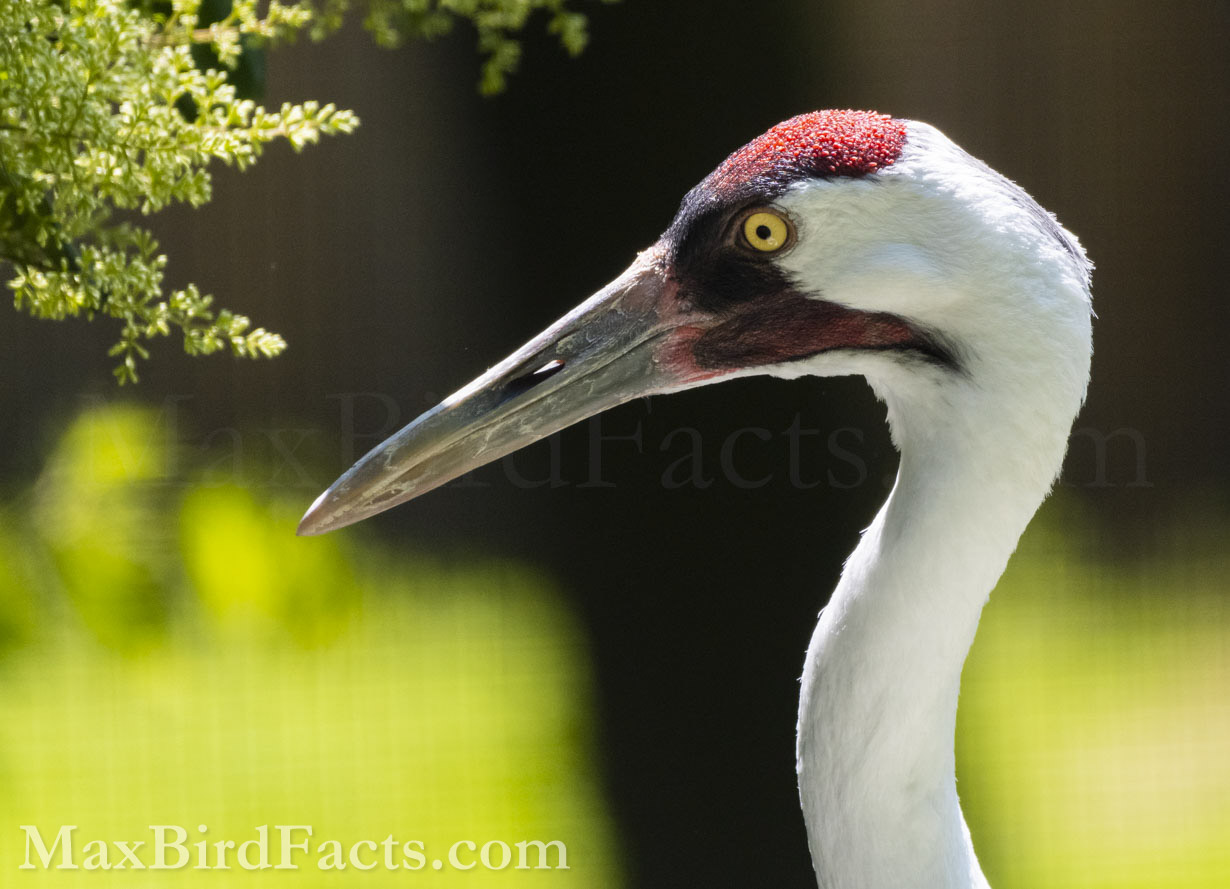
6. Whooping Cranes are the second-rarest bird in North America.
Because of the Whooping Crane’s tragic past, their story is one of resurrection. We will get into the number of wild cranes today later, but for perspective, there is one Whooping Crane for every 1,600 Sandhill Cranes.
These birds beat the odds of extinction and are much better off today than 100 years ago. Still, they have a long way to go before the Whooping Crane can come off the endangered species list.
The rarest bird in North America today is the California Condor (Gymnogyps californianus), with 337 flying wild today. Unfortunately, the condor’s history is even worse than the crane’s, with some organizations still listing the California Condor as extinct in the wild.
7. Whooping Cranes can be easily misidentified.
Whooping Cranes often climb to astonishing heights when migrating, making their identification somewhat tricky. There are several species to be concerned with when deciding on which white bird with black wingtips you’re trying to ID, but the two most likely culprits are Snow Geese (Anser caerulescens) and American White Pelicans (Pelecanus erythrorhynchos).
When making your verdict, take a solid look at the bird’s head and neck. Whooping Cranes have distinct long necks and powerfully pointed beaks that stay straight ahead of their body in flight.
Snow Geese also have long necks that stay straight in flight, but their beaks are much shorter and rounded at their tip. In addition, the American White Pelican typically tucks their head into their shoulders, giving them a shorter profile than the crane.
If you’d like some more identifying tips and to learn to consistently identify a Whooping Crane correctly, check out my article, Whooping Crane vs. Sandhill Crane – 2 Critical Distinctions To Memorize!
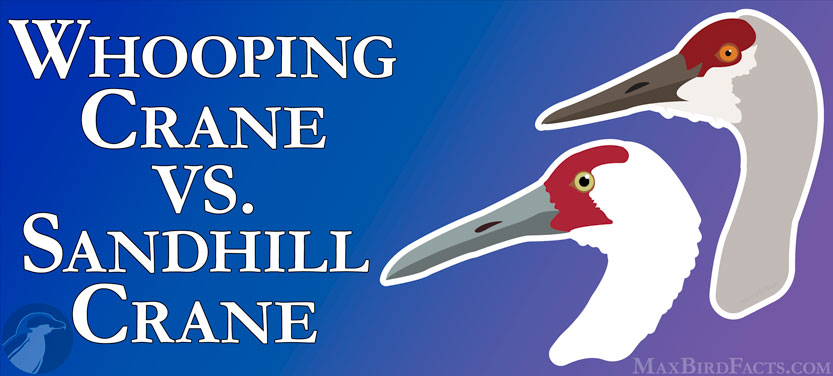
8. Whooping Cranes aren’t closely related to Sandhill Cranes.
The Sandhill Crane was split from the genus Grus in 2016. New genetic research was the cause of this split.
This might seem odd to include on a list of facts about Whooping Cranes, but I feel it is important to understand how these seemingly fixed groups can change when even the smallest amount of evidence comes to light.
The four species, Sandhill Crane (Antigone canadensis), Sarus Crane (Antigone antigone), Brolga (Antigone rubicunda), and White-naped Crane (Antigone vipio), were all more closely related to each other than they were to other species that remained in the parent genus Grus.
The new name for their genus, Antigone, came from Greek mythology as the daughter of King Oedipus, and she was the subject of the Athenian tragedy Antigone by Sophocles.
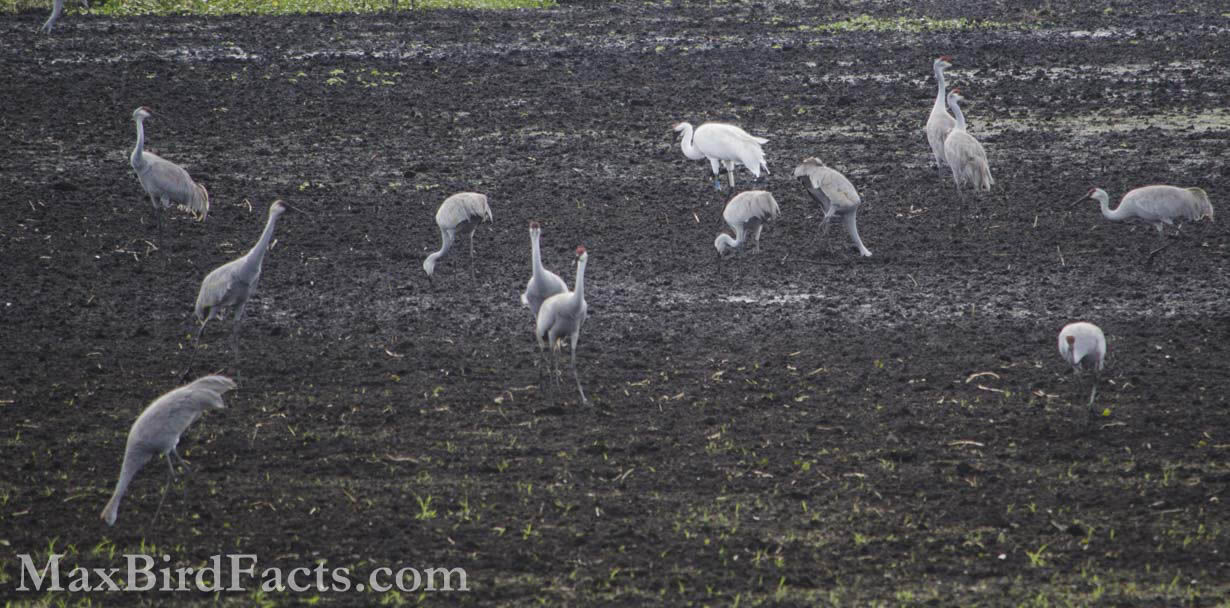
9. Whooping Cranes get their name from their bugling calls.
Whooping Cranes earned their name from their one-note bugling call. Their incredibly long trachea creates their iconic song.
While the Whooping Crane stands around five feet tall, its trachea is just as long. To fit this length, most of the organ coils inside the bird’s sternum just behind its keel. These coils create the bird’s variable range and spectacular volume.
However, because the crane’s calls emanate from the trachea rather than the syrinx, like Songbirds (Passeriforms), its vocalizations cannot be considered proper songs.
10. Whooping Cranes mate for life.
Whooping Cranes are among the select few species that are truly monogamous, where they remain faithful to their partner until death. While most avian species are monogamous, the majority are only socially monogamous.
The difference between social and true monogamy is straightforward. Social monogamy is when two birds build a nest and raise a brood together while having occasional extramarital affairs. In contrast, species that are truly monogamous are active only with their partner and typically stay together even outside of the breeding season.
Whooping Crane’s pair bonds are so strong that the only thing that severs them is death, which can take quite a while. Still, if a partner dies, the surviving spouse will eventually seek a new relationship.
Wild cranes have been documented as old as 33 years. Canada and the US Fish and Wildlife Service have kept a close eye on this old male named Lobstick, who has reared 17 chicks throughout his life.
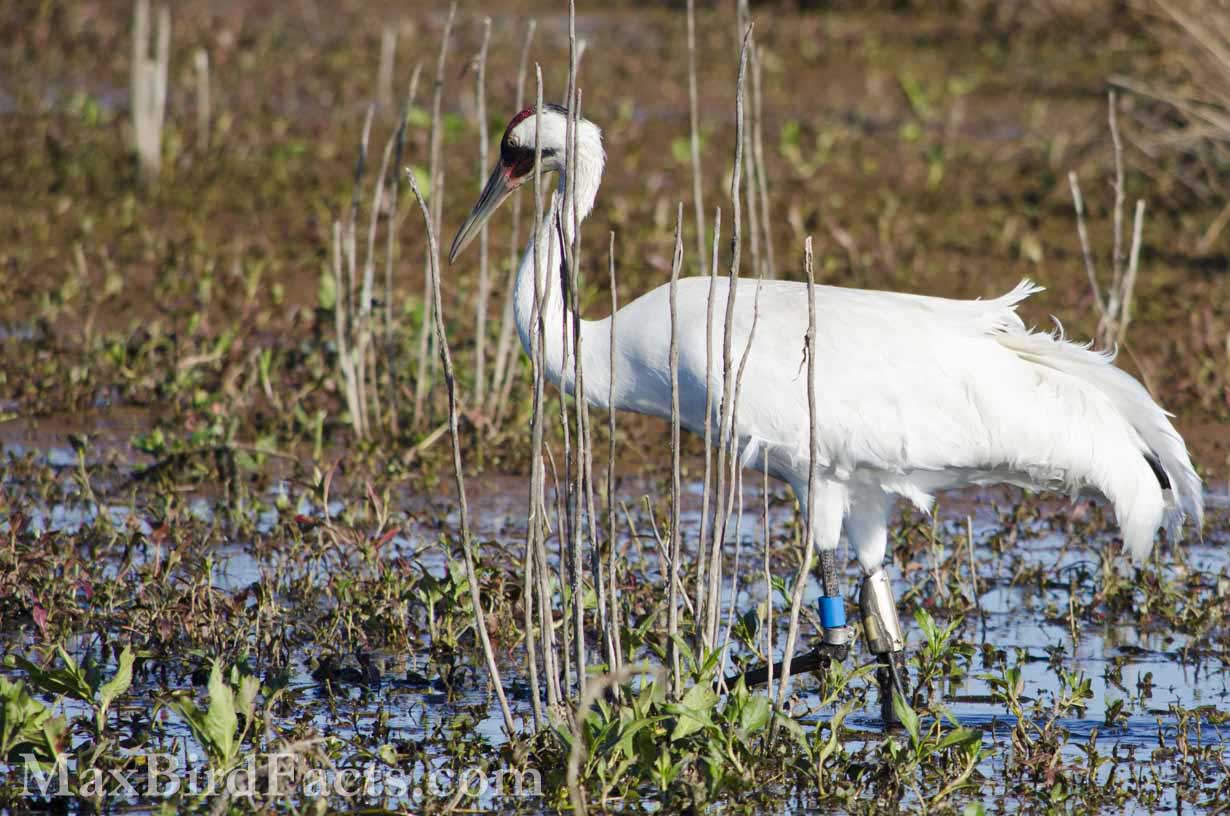
Adult Whooping Cranes perform courtship displays of dancing and calling to continually build their pair bonds. Additionally, unison walks and calls are vital for crane couples to remain together throughout the seasons.
Once it’s time to mate, a pair will return to the same nest site they have in the previous years. Whooping Cranes have an exceptionally high site fidelity, rebuilding on nearly the exact spot each season.
11. Today, around 450 Whooping Cranes are flying the wild skies of the United States and Canada.
The bounceback that Whooping Cranes have undergone is an astonishing accomplishment for wildlife conservation. Today, there are somewhere between 400 and 500 wild Whooping Cranes in North America. Yet, this number seems to change depending on the source.
According to the US Fish and Wildlife Service, 543 wild Whooping Cranes reached their winter territories in Texas in 2021, and this number was up from 506 in 2019. However, these numbers were just accounting for migratory cranes returning to Texas for the winter, so the overall number of other birds, including Florida and Louisiana resident populations and other wintering flocks, could mean their numbers are much higher.
Still, the Cornell Lab of Ornithology reports 440 wild and 160 captive Whooping Cranes in North America, bringing their total numbers to roughly 600 individuals. Unfortunately, I couldn’t find the exact date for their determinations, so this figure might be somewhat unreliable.
Regardless, the wild Whooping Crane population has made a conservative 250% climb from the 180 individuals restored to the wild by Operation Migration! This is a huge success and means an increase of about 14 cranes annually from 2001 to 2021.

Now You Know 11 Facts About Whooping Cranes!
I hope you learned some new and fascinating facts about Whooping Cranes. From their salvation from extinction to their massive trachea and unbreakable pair bonds, Whooping Cranes are undeniably magnificent.
Hopefully, the continued efforts to protect and rebuild this endangered species will pay off for future generations to enjoy and marvel at.
If you have ideas or suggestions for topics you would like me to write about in the future, feel free to leave a comment below or shoot me an email!
If you enjoyed this article, please subscribe to my email list to be the first to know when I post new articles!
Get Outside & Happy Birding
Max
